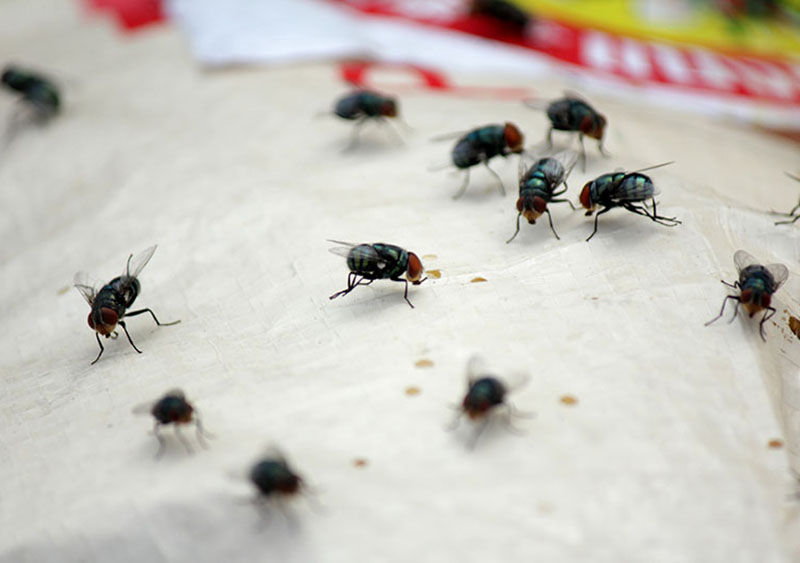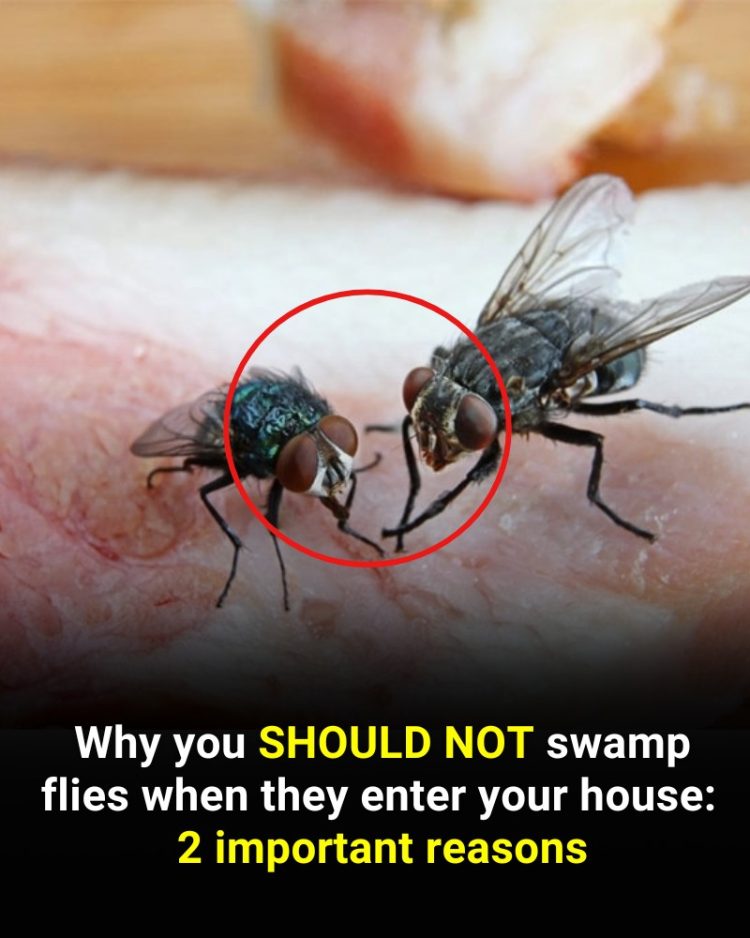Depending on where the insect has been, it may be carrying bacteria such as E. coli or Salmonella—even if only in small amounts.
You might not see it, but every squashed insect can leave behind invisible microorganisms that are tough to clean up, even with a quick wipe.

Reason 2: Alarm pheromones can attract more insects
Many types of flies release chemical signals—like a panic alert—when they’re injured or killed. These pheromones can actually attract other insects, making the problem worse.
Especially during the summer or in rooms already prone to bugs, a dead fly can act like a tiny magnet, drawing in more pests and increasing the chance of a full-blown infestation.
The result? More flies hovering around the same area, often gathering near the carcass of the first.
What to Do Instead
1. Catch and release
Use a cup and a stiff sheet of paper:
- Trap the insect under the cup.
- Slide the paper underneath.
- Carry it outside and let it go.

2. Use plant-based sprays or natural repellents
Try sprays made with citronella, mint, geranium, or lavender. These won’t kill the bugs but will create a natural barrier to keep them away.
3. Mechanical traps
UV light traps attract insects and contain them without creating mess or spreading germs. You can also hang adhesive traps in key areas around the home.
